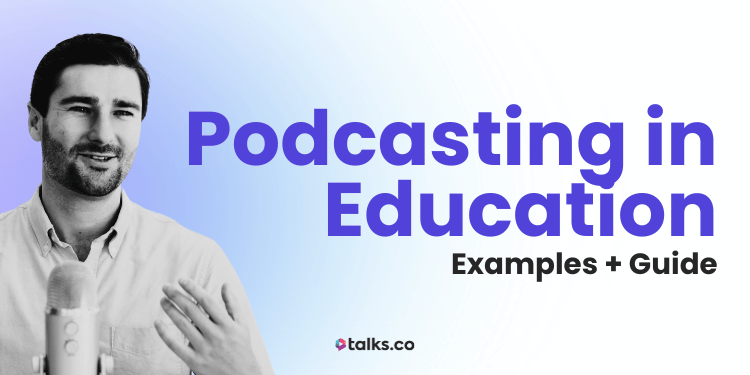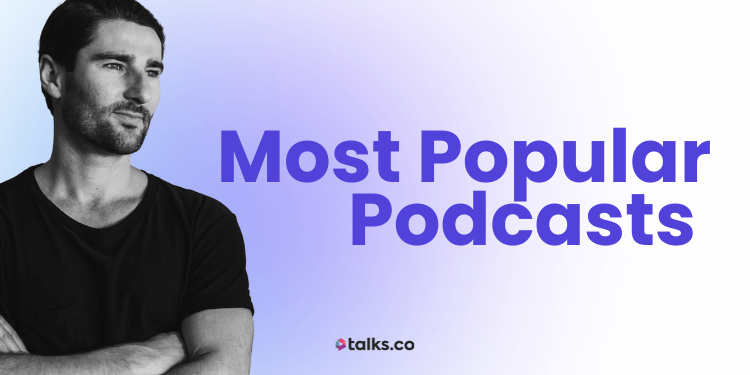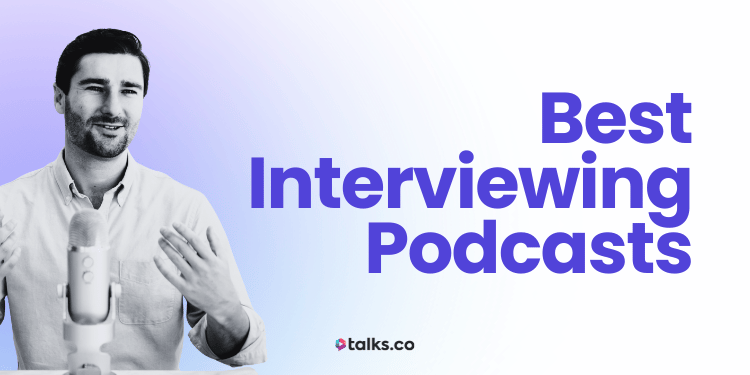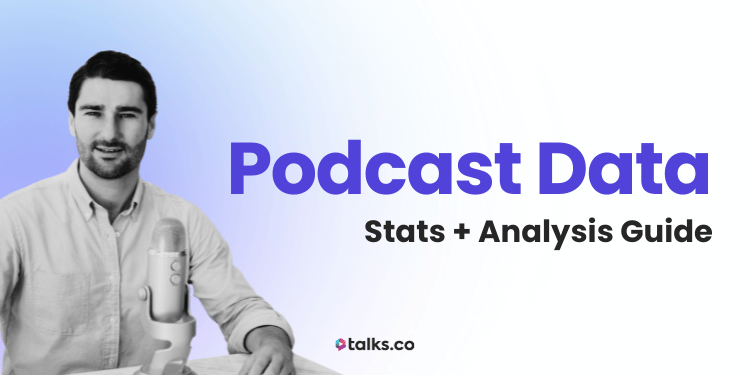Remember carrying a stack of textbooks everywhere you went, just to keep up with classes? Fast forward a few years, and students can now “carry” an entire semester in their pocket.
Podcasts are quietly changing the way people learn, letting anyone listen to lectures, discussions, or even entire books while commuting, exercising, or grabbing a coffee.
Some schools and universities are already using them in ways you might not expect from student-led shows to flipped classrooms that actually stick.
Whether you’re an educator, coach, or course creator, this guide will give you a look at how podcasting in education is shaking things up.
I’ll even share a few practical ideas you can grab to make learning more engaging.
What Is Podcasting in Education?
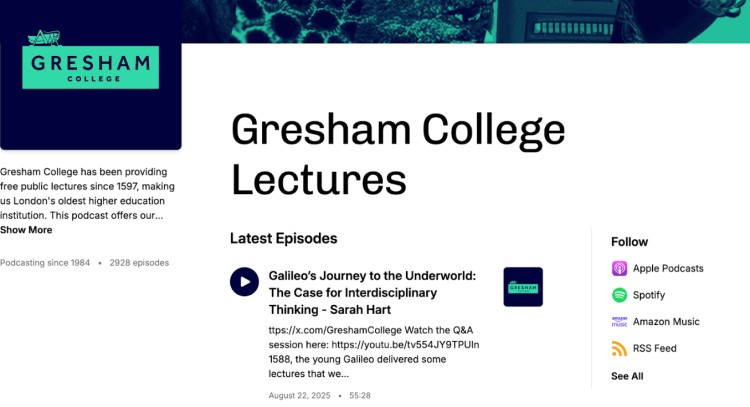
Podcasting in education is about turning audio into a learning tool.
It’s less just recording lectures and more creating lessons, discussions, and interviews that students can access anytime. Think of it as the classroom moving into your pocket.
What makes podcasts different from traditional learning:
- On-demand learning: Students decide when and where to listen, from the subway to the gym.
- Multiple formats: Episodes can be short summaries, full lectures, interviews, or student projects.
- Active engagement: Listeners can follow along, take notes, or even produce their own episodes.
Educators are using podcasts to experiment with different ways of teaching.
- A science teacher might record lab walkthroughs students can replay at home.
- A business lecturer could host guest founders sharing real-world lessons.
- Even K-12 students can create podcasts to explain history topics or current events to classmates.
It’s not that podcasting is replacing the classroom. It’s not.
If anything, it’s giving teachers and students a flexible tool to make learning stick, inspire all sorts of curiosity, and connect ideas in ways a textbook can’t.
10 Advantages of podcasts in education
Podcasts offer clear advantages for both educators and students. Here are ten ways they improve learning experiences:
- Flexible formats: Short summaries, full lectures, interviews, or student projects keep content interesting.
- Accessibility: Audio content helps learners with different learning styles or reading difficulties.
- Student engagement: Storytelling, interviews, and discussions hold attention better than slides alone.
- Reinforces learning: Replay tricky concepts like a chemistry lab walkthrough or a history debate.
- Supports flipped classrooms: Students prep at home with a podcast, freeing class time for discussion or exercises.
- Self-paced learning: Pause, rewind, or skip ahead depending on skill or interest.
- Scalable delivery: One podcast episode can reach hundreds or thousands of learners.
- Low-cost production: Even a simple microphone and free software can get a show running.
- Collaboration opportunities: Invite guest lecturers, peers, or students to co-host educational podcasts and episodes.
- Encourages creativity: Students can script, record, and produce content, turning learning into an active project.
8 Benefits of podcasting in education
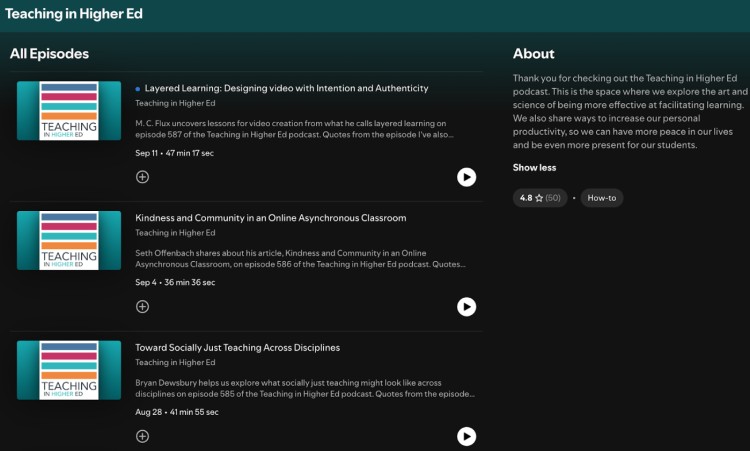
Did you know that podcasting can improve comprehension, retention, and engagement? Here are eight different ways podcasts can help students:
- Remember material better: Listening engages different parts of the brain than reading.
- Learn on the go: Fit lessons into daily routines without extra screen time.
- Follow personalized paths: Pick episodes on good podcast topics that interest them most.
- Develop critical thinking: Discussion-based content encourages reflection and analysis. That’s what makes a good podcast.
- Prepare for exams: Replaying key episodes is an easy revision method.
- Access to diverse perspectives: Universities can share lectures with students worldwide.
- Actively participate: Students can take notes, create responses, or lead discussions.
- Boost credibility: Educators using podcasts can build authority in their field.
5 Podcasting examples for students
Educators are experimenting with podcasts in creative ways.
- Student-led shows: A high school history class records weekly episodes on World War II, interviewing classmates and even local historians to bring research topics and debates to life.
- Supplemental lectures: A chemistry teacher makes short lab walkthroughs students can replay at home before trying experiments in class.
- Discussion panels: College psychology students host episodes with professors and alumni discussing real-world mental health challenges, linking theory to practice.
- Flipped classroom content: In a language course, ten-minute episodes introduce new vocabulary before class, leaving time for conversation practice.
- Career insights: Business students hear startup founders share fundraising and scaling lessons, giving theory a practical edge.
Short 10-15 minute episodes can transform K-12 classrooms, while longer ones suit university students, making learning active, practical, and something students actually want to press play for.
What Is a Podcast for Students?
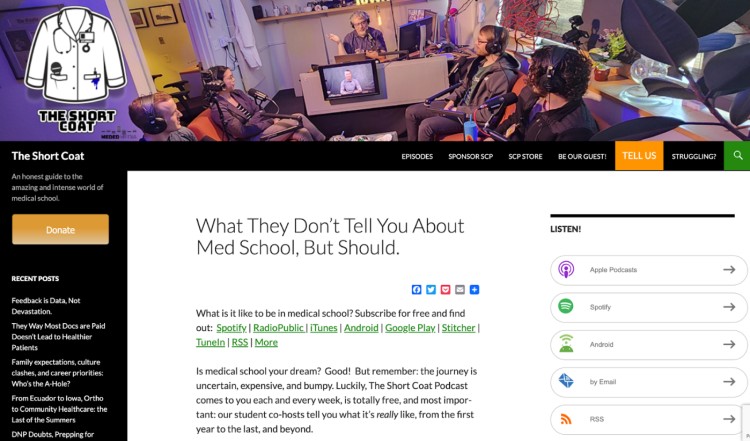
A podcast for students is content made for their world, their questions, and their challenges. These are practical, honest, and relatable insights that students can use to navigate school, life, and future careers.
Let’s look at a few real examples to see how they work.
- The Short Coat: Med students from the University of Iowa share their experiences with med school life, discussing challenges, rotations, and the realities of becoming a doctor.
- The Connected College Podcast: Focuses on leadership strategies and student success, including how to connect academic work to career outcomes.
- The Internship Show: Offers practical career advice with interviews from recruiters and industry professionals on landing internships and building employable skills.
- Just Admit It!: IvyWise experts provide clear guidance on college admissions, financial aid, and navigating competitive application processes.
- The College Essay Guy Podcast: Covers expert advice on writing personal statements, preparing for standardized tests, and understanding college application strategies.
Podcasting for students
Podcasts let students dig into what interests them and share it with the world.
- Independent projects: A high schooler obsessed with climate change can produce a three-part series. They interview local experts, report on case studies, and give their take. Research sticks because they’re telling a story, not just filling a worksheet.
- Peer teaching: Students record episodes teaching classmates about coding, history debates, or book reviews. Everyone learns from each other instead of just the teacher.
- Hands-on skills: Producing a podcast builds interviewing, scripting, editing, and speaking skills. A language class could record short dialogues or storytelling exercises that classmates critique.
Students aren’t just listening. They’re creating, curating, and owning their learning. It’s learning with a purpose.
Podcasting in schools
Schools are finding ways to make student podcasts part of the routine.
- Clubs and electives: Media or history clubs run weekly episodes covering school news, local events, or student research. It’s hands-on learning that actually sticks.
- Class projects: Instead of a standard report, students create a podcast summarizing a book, exploring a historical event, or explaining a science concept. They plan, record, and edit the educational content themselves.
- Cross-grade mentorship: Older students show younger ones the ropes in production, boosting leadership and teamwork while creating a growing library of content.
- Showcasing voices: A series of podcasts can go out to the whole school or online. Students get recognition and feedback while practicing real-world skills.
Podcasts give students a chance to explore, create, and connect. They’re not just learning. They’re building something that actually matters.
How Can Podcasting Be Used in Education?
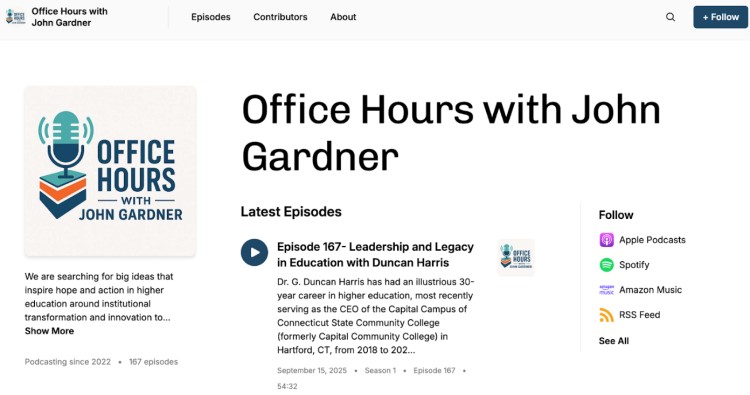
Podcasting isn’t just a side hobby for schools anymore. It’s become a tool for flexible learning and teaching, recruiting, and connecting with wider audiences beyond campus walls.
From student-run shows to faculty-led research spotlights, universities are finding smart ways to use an educational podcast as both a learning resource and marketing asset.
Below are real examples, creative approaches, and practical tips that show how listening to podcasts fits directly into higher education.
5 Innovative ways universities are using podcasts
Universities aren’t just pushing lectures through headphones. They’re testing podcasts in ways that extend learning, connect campuses, and build influence far beyond the classroom.
- Research to public: Faculty translate complex studies into plain-language episodes aimed at policymakers and communities.
- Global classroom: Universities run cross-border podcasts connecting students with peers abroad to compare culture, policy, or science.
- Campus archives: History departments record oral histories from alumni and staff, creating a living audio library.
- Industry collaborations: Business schools co-produce shows with companies, letting students hear unfiltered lessons from executives.
- Continuing education: Professional schools (law, medicine, engineering) release podcasts that double as CPD/CE credit for alumni.
Podcasting in higher education examples
Universities are turning podcasts into more than side projects. They’re using them to solve real problems and reach bigger audiences:
- Teaching in Higher Ed: Bonni Stachowiak digs into pedagogy and productivity, like how to design courses that actually keep students engaged.
- The EdUp Experience: Joe Sallustio pulls in presidents and deans to hash out hot-button issues like free tuition and the future of online degrees.
- Office Hours with John Gardner: Honest conversations with higher ed leaders on equity gaps, student success rates, and what real reform looks like.
- Higher Ed Demand Gen Podcast: A go-to for marketing teams with episodes that tackle recruitment funnels, virtual tours, and student engagement strategies.
- IlluminatED: Students and industry leaders unpack the future, from AI in grading to reshaping the campus experience.
10 tips for launching your higher education podcast
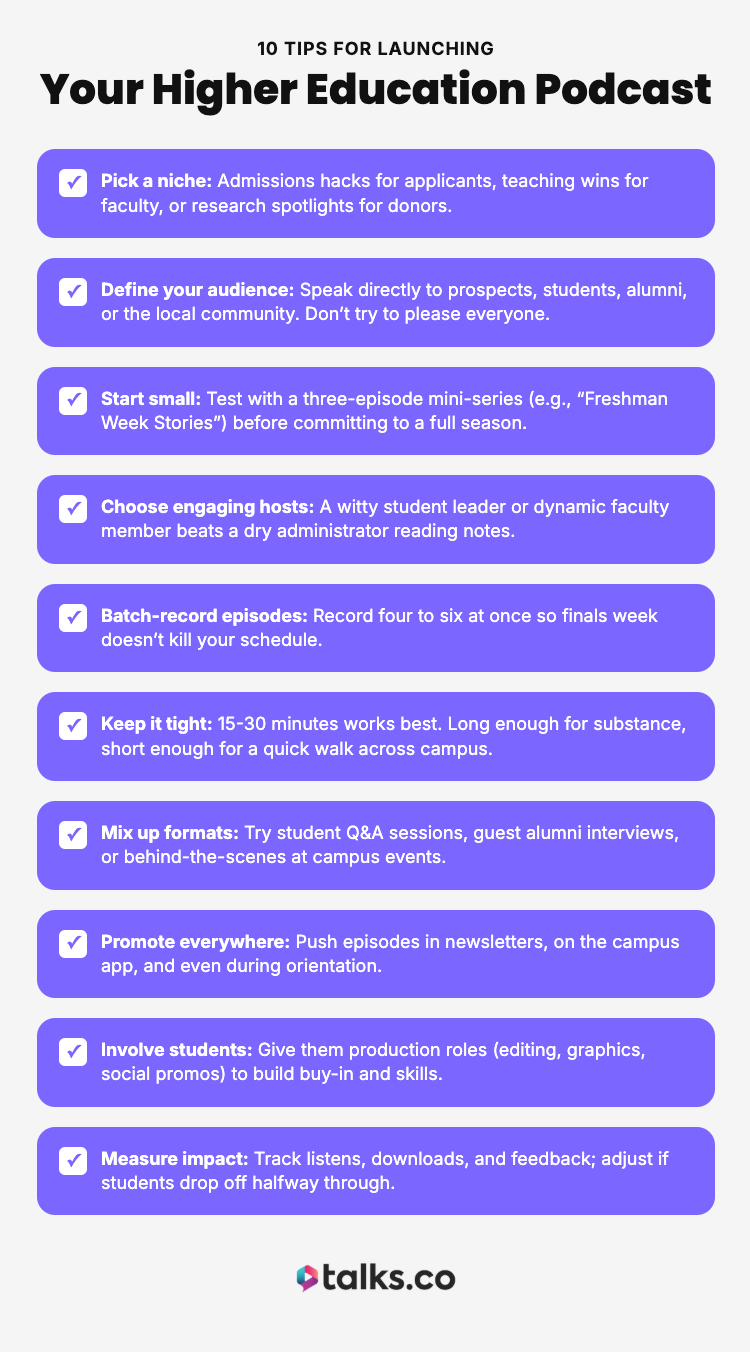
A campus podcast only works if it’s consistent, valuable, and aligned with your mission. Here’s how to set real traction using a podcast:
- Pick a niche: Admissions hacks for applicants, teaching wins for faculty, or research spotlights for donors.
- Define your audience: Speak directly to prospects, students, alumni, or the local community. Don’t try to please everyone.
- Start small: Test with a three-episode mini-series (e.g., “Freshman Week Stories”) before committing to a full season.
- Choose engaging hosts: A witty student leader or dynamic faculty member beats a dry administrator reading notes.
- Batch-record episodes: Record four to six at once so finals week doesn’t kill your schedule.
- Keep it tight: 15-30 minutes works best. Long enough for substance, short enough for a quick walk across campus.
- Mix up formats: Try student Q&A sessions, guest alumni interviews, or behind-the-scenes at campus events.
- Promote everywhere: Push episodes in newsletters, on the campus app, and even during orientation.
- Involve students: Give them production roles (editing, graphics, social promos) to build buy-in and skills.
- Measure impact: Track listens, downloads, and feedback; adjust if students drop off halfway through.
Need help with audio recording software, finding guests, or best practices for running interviews?
Check out our guides on how to do a podcast interview, finding podcast guests, and how to record a podcast to make your campus show unforgettable.
10 Podcasting in education topics
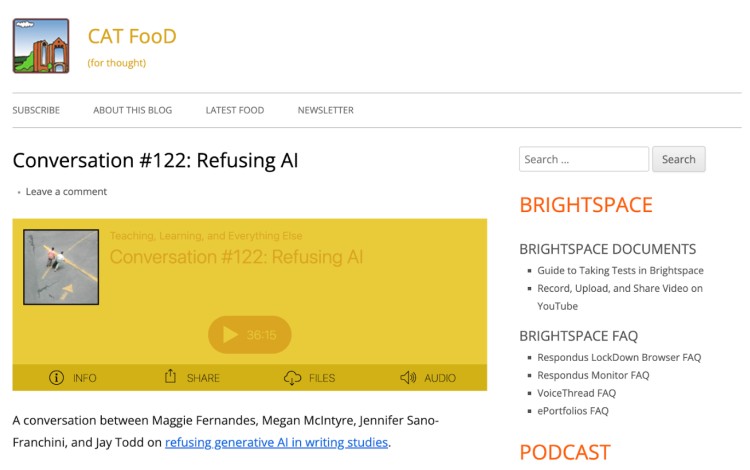
Universities and schools have endless material to turn into episodes for all types of podcasts. Here are ten concrete, ready-to-run podcast ideas that make the value crystal clear.
- Freshman survival guide: First-years share their toughest week-one mistakes and how they adjusted.
- Lab notes explained: Chemistry majors break down recent experiments in plain English so non-science students get it.
- Alumni on the job: A grad now working at NASA talks about how a single elective inspired their entire career journey.
- Mental health check-in: Counseling staff and students host candid chats on burnout during finals.
- Global student voices: International students compare campus life in the US, UK, and Asia.
- Professors unfiltered: A philosophy professor and an engineering professor debate AI ethics over tea.
- Inside admissions: Staff walk listeners through a real (anonymized) application and why it stood out.
- Campus in the community: Public policy students cover their fieldwork helping local governments.
- Creative spotlight: The theater department shares behind-the-scenes interviews with the cast of the spring play.
- Study hacks that work: Students swap rapid-fire tips that actually got them through exams.
Lean Into the Future
Podcasting in education is turning classrooms upside down.
Lectures, debates, and research aren’t stuck on campus. They land straight in earbuds, laptops, and phones. From med school survival tips to college admissions strategies, the right podcast reaches students where they actually are and keeps them coming back for more.
Running a show?
Stop playing inbox tennis with irrelevant pitches. Set up your Talks.co profile, see who’s genuinely interested, and start connecting instantly.
Claim your FREE Talks Creator profile now and make your podcast worth pressing play.
